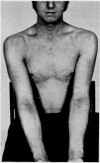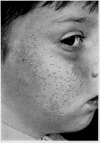Abstract
May, G. (1973).British Journal of Industrial Medicine,30, 276-283. Chloracne from the accidental production of tetrachlorodibenzodioxin. Following the accidental production of 2,3,7,8-tetrachlorodibenzodioxin (dioxin) as the result of an exothermic reaction at a chemical plant in Derbyshire, 79 cases of chloracne were recorded, many of them severe. Contrary to the usual experience they have responded very favourably to treatment and there were no cases of contact chloracne among relatives or domestic animals in the initial outbreak. However, two cases of contact chloracne were recorded three years later.
Similar incidents are known to have occured in both Europe and the United States of America, almost invariably accompanied by widespread severe illness and with fatalities. Apart from one death due to an explosion which followed the exothermic reaction the more serious sequelae, which may range from depression and loss of weight to liver, kidney, and cardiac failure as well as malignant disease, have not occurred.
A quick and reliable method of biological assay for the presence of dioxin in produced trichlorophenol was developed based on oral dosage to rabbits with assessment of liver function at fixed time intervals thereafter. This test has already been superseded by instantaneous gas-liquid chromatography.
An entirely new plant with suitable modifications and multiple safety features has now been in satisfactory operation for three years.
Full text
PDF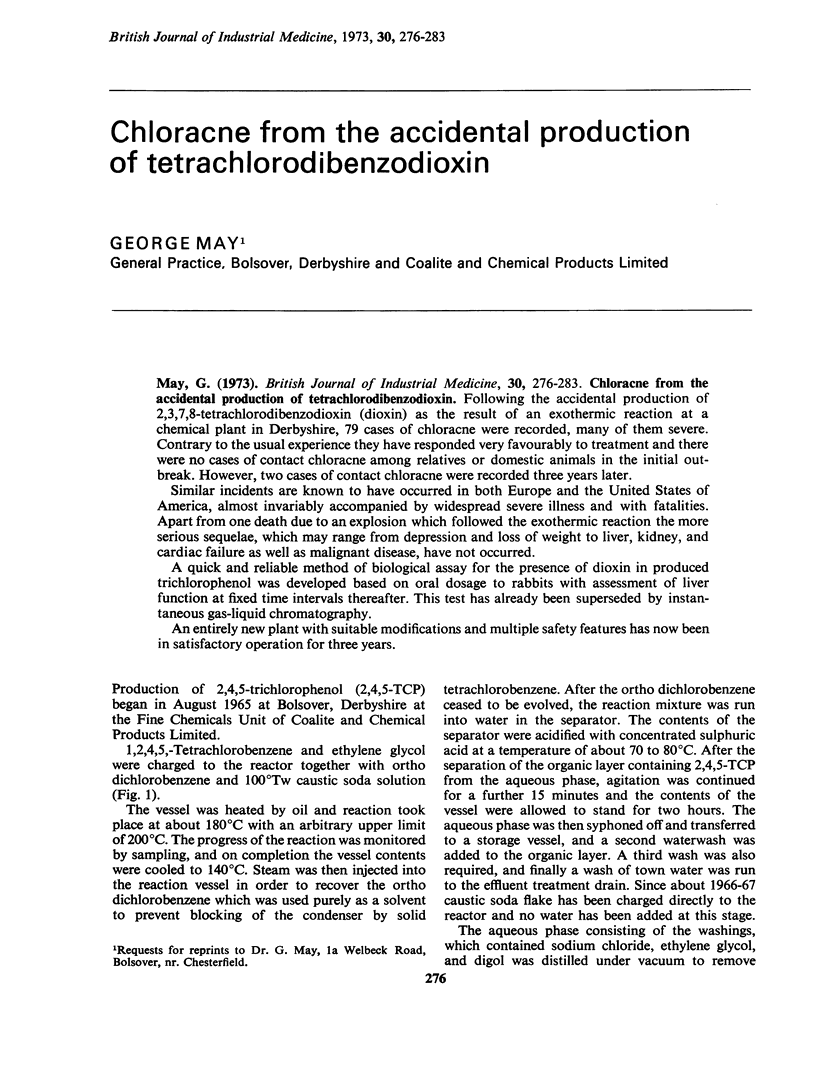
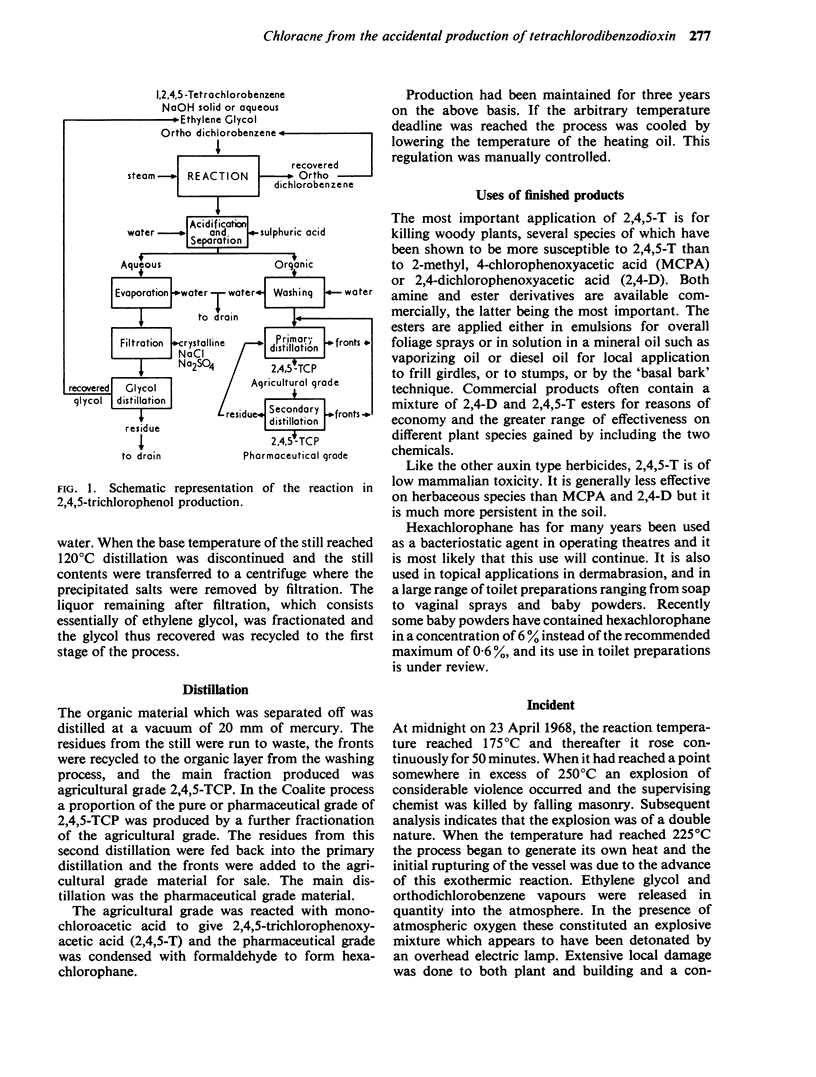
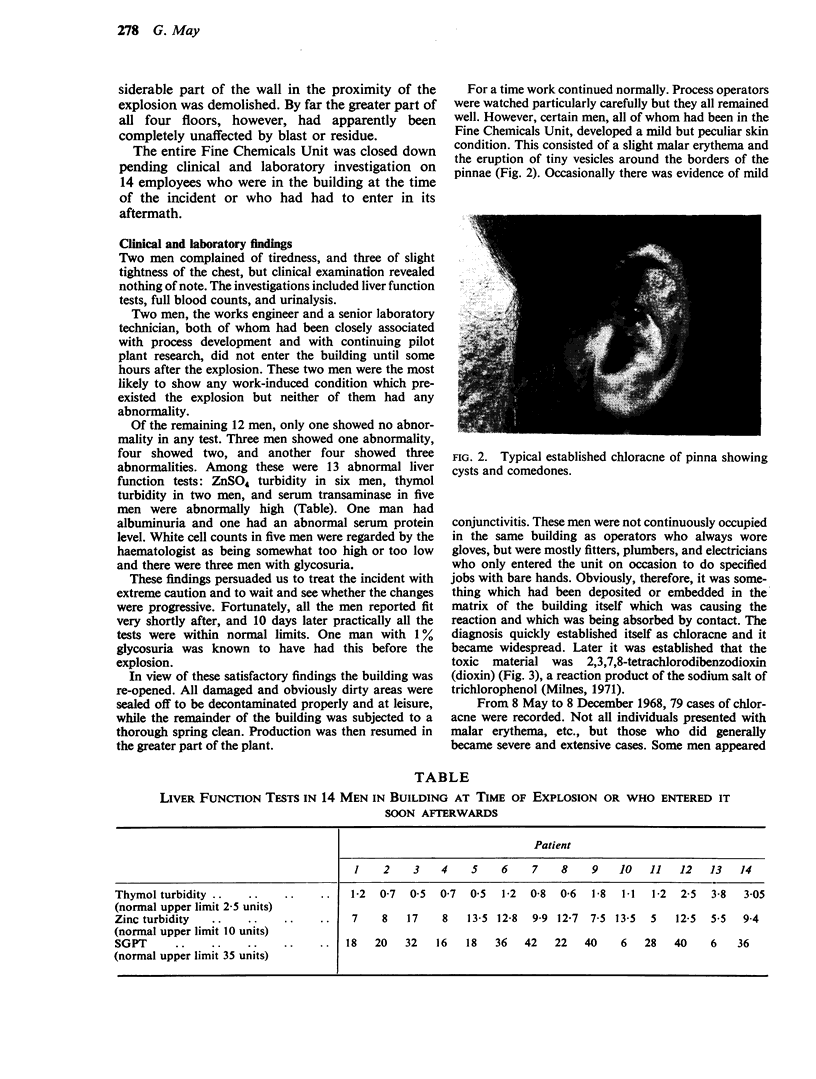
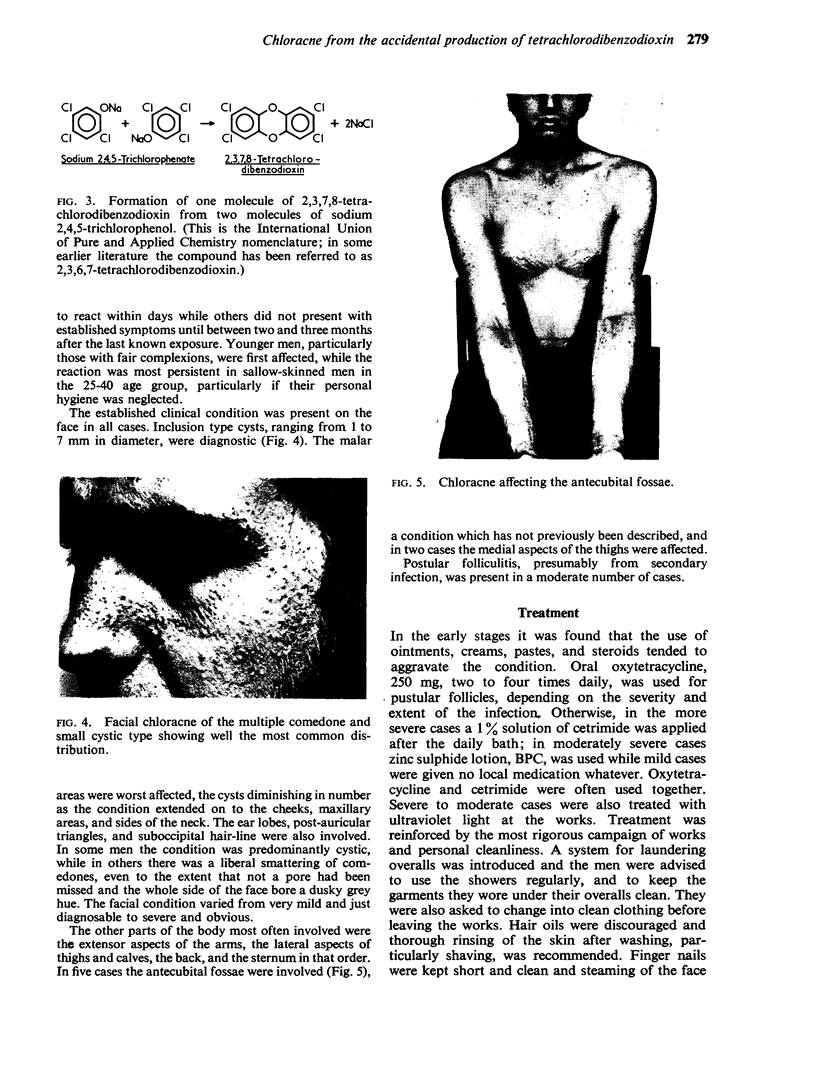
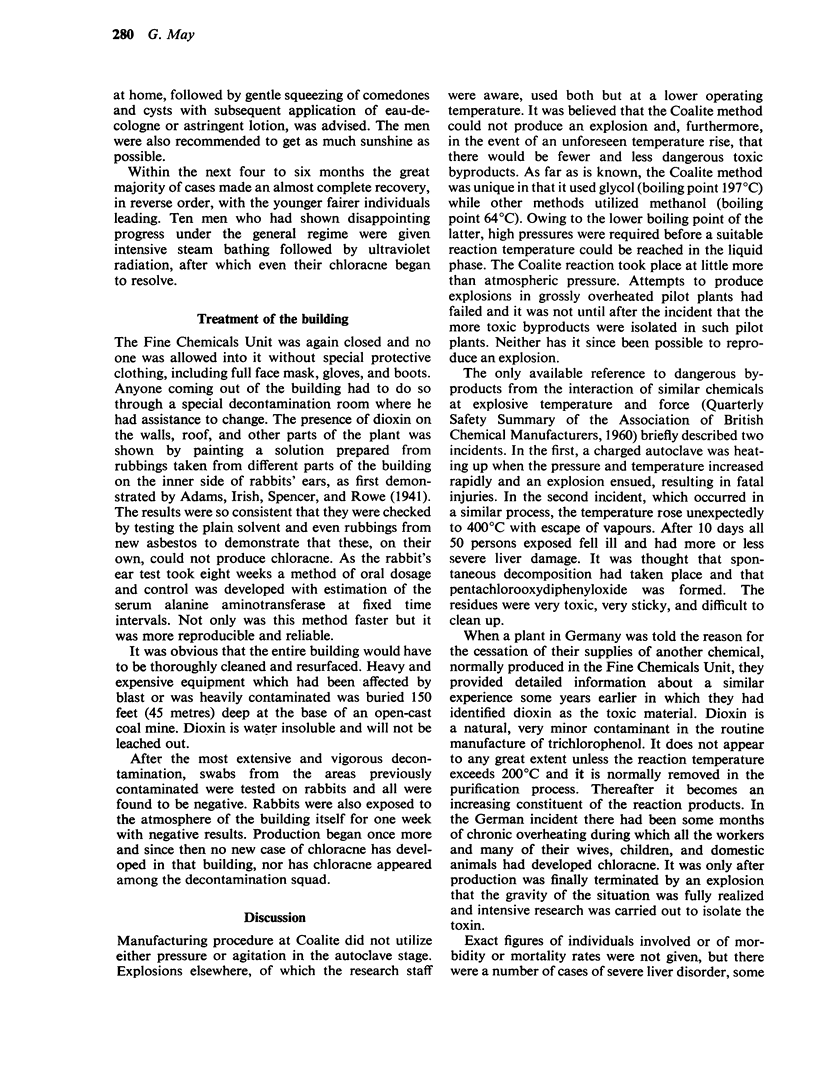
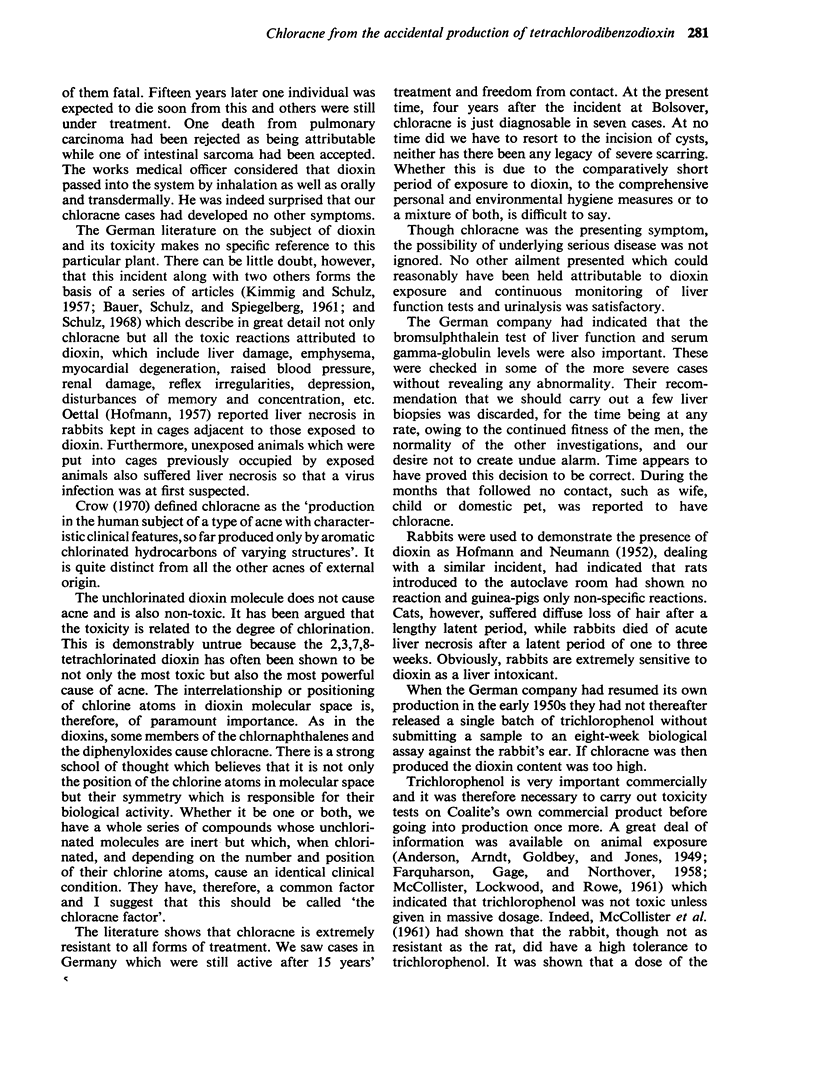
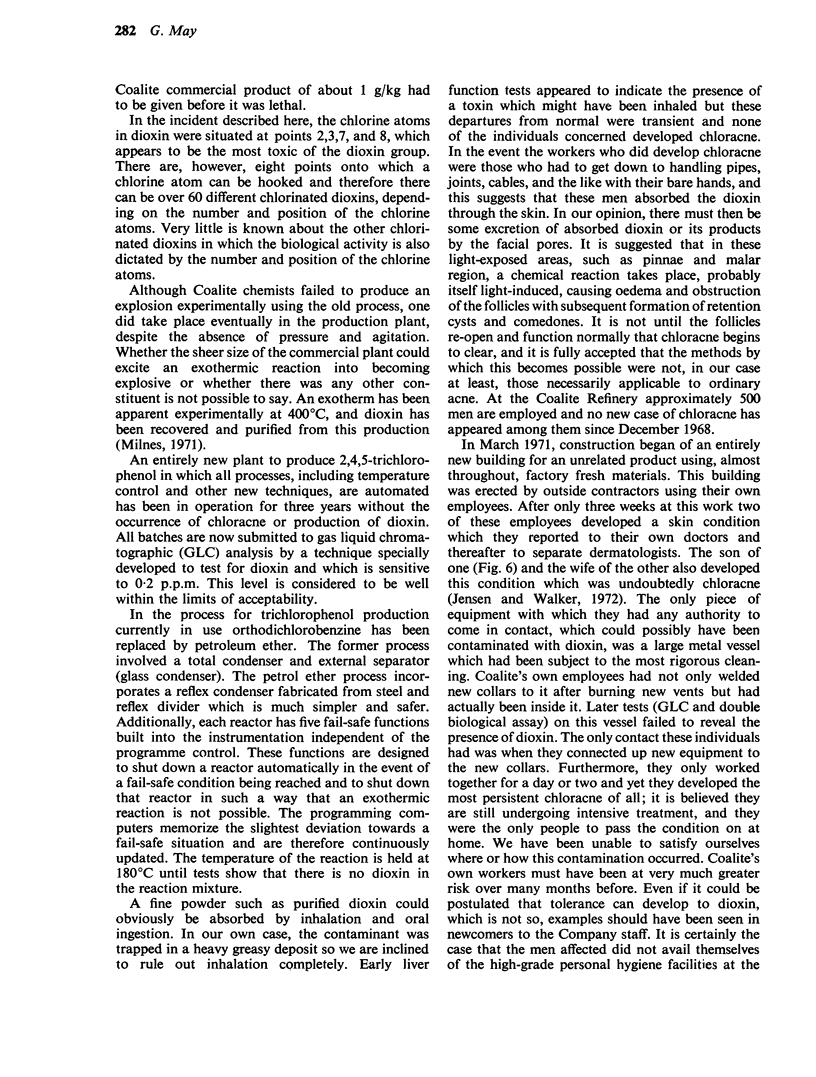

Images in this article
Selected References
These references are in PubMed. This may not be the complete list of references from this article.
- FARQUHARSON M. E., GAGE J. C., NORTHOVER J. The biological action of chlorophenols. Br J Pharmacol Chemother. 1958 Mar;13(1):20–24. doi: 10.1111/j.1476-5381.1958.tb00184.x. [DOI] [PMC free article] [PubMed] [Google Scholar]
- HOFMANN H. T. Neuere Erfahrungen mit hochtoxischen Chlorkohlenwasserstoffen. Naunyn Schmiedebergs Arch Exp Pathol Pharmakol. 1957;232(1):228–230. [PubMed] [Google Scholar]
- Jensen N. E. Chloracne: three cases. Proc R Soc Med. 1972 Aug;65(8):687–688. [PMC free article] [PubMed] [Google Scholar]
- KIMMIG J., SCHULZ K. H. Berufliche Akne (sog. Chlorakne) durch chlorierte aromatische zyklische Ather. Dermatologica. 1957 Oct;115(4):540–546. [PubMed] [Google Scholar]
- MCCOLLISTER D. D., LOCKWOOD D. T., ROWE V. K. Toxicologic information of 2,4,5-trichlorophenol. Toxicol Appl Pharmacol. 1961 Jan;3:63–70. doi: 10.1016/0041-008x(61)90009-6. [DOI] [PubMed] [Google Scholar]
- Milnes M. H. Formation of 2,3,7,8-tetrachlorodibenzodioxin by thermal decomposition of sodium 2,4,5,-trichlorophenate. Nature. 1971 Aug 6;232(5310):395–396. doi: 10.1038/232395a0. [DOI] [PubMed] [Google Scholar]




